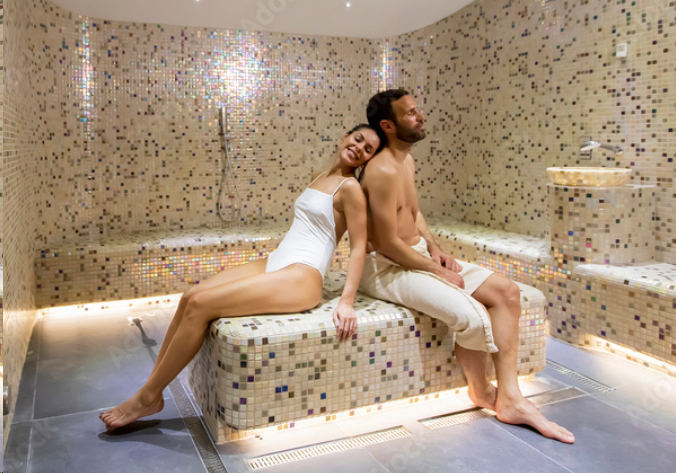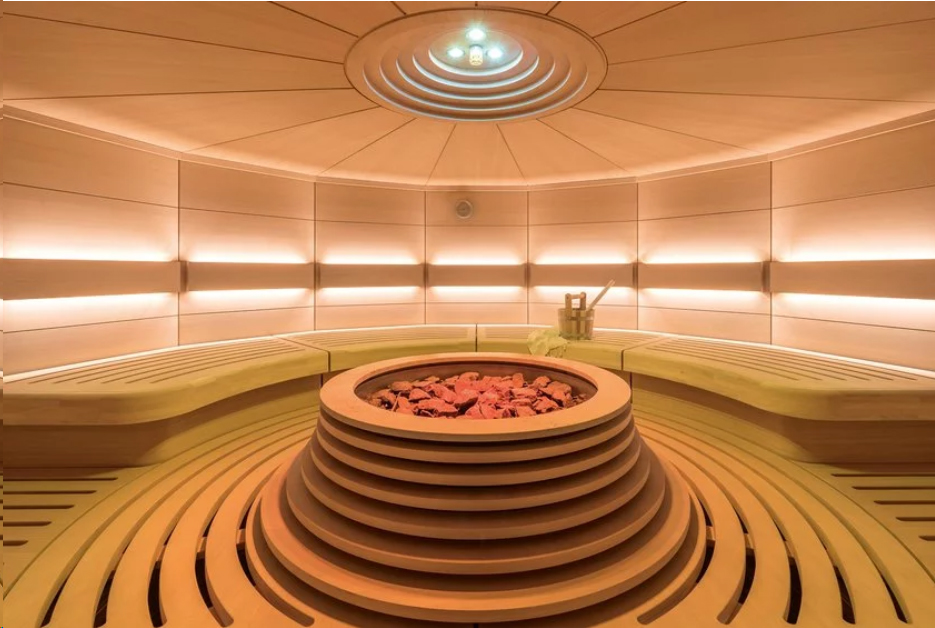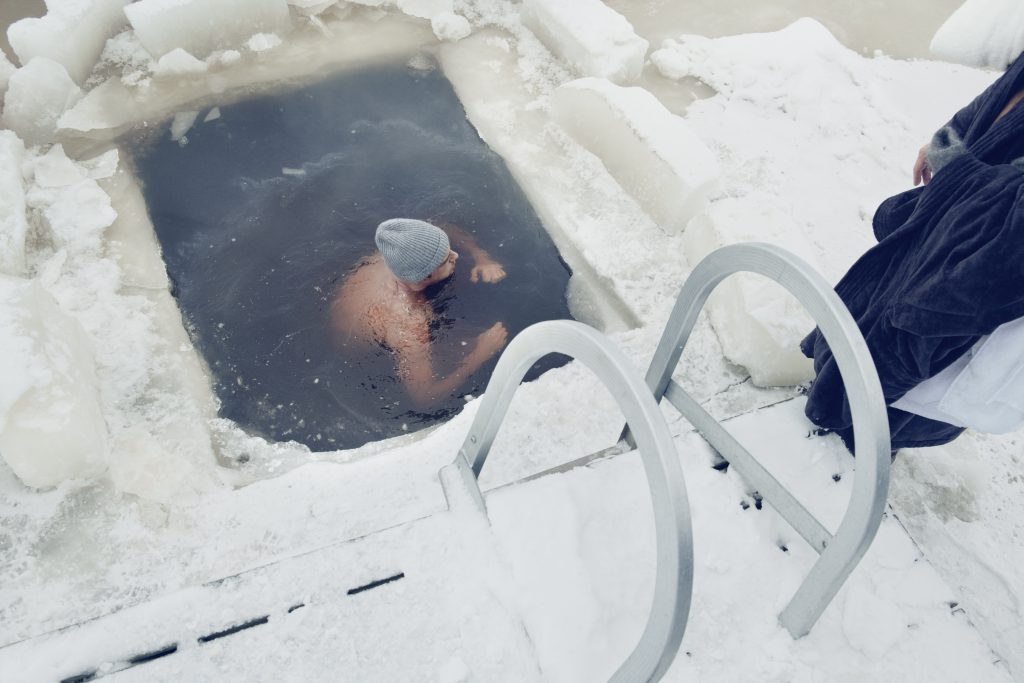
A tepidarium wellness room promotes relaxation and well-being through heat therapy. Although the word itself derives from the Latin word ‘tepidus’, meaning lukewarm, the bathing concept stems from the ancient Romans when bathers used different heated rooms for hygiene and cleansing purposes but also as a social hub for people to relax, chat, and even conduct business.
The origins of the tepidarium
The tepidarium acclimatised bathers to the extreme temperature of the cold frigidarium and intensity of the hot caldarium room. These rooms were designed to be aesthetically pleasing and comfortable, with benches for reclining. They were often ornately decorated, featuring mosaics, marble, sculptures, and intricate designs on the walls and floors to showcase Roman artistry. Using an ancient Roman underfloor heating method (the hypocaust system), hot air and steam was generated from a furnace (praefurnium) and circulated through spaces beneath the floor and within the walls, warming the room to a pleasant, moderate temperature.
Nowadays, this milder form of traditional sauna is commonly used as a standalone therapy for relaxation and rejuvenation. The humid conditions are more tolerable than the often oppressive heat of the dry sauna, thereby reducing the strain on the cardiovascular system. Unlike dry heat environments such as dry saunas, the tepidarium offers a gentler and more hydrating experience. A tepidarium soothes the body, mind and soul and promotes a general sense of well-being.
What is a contemporary tepidarium with moist heat?
On the whole, the modern tepidarium is an accessible luxury. Whether in an exclusive spa or residential wellness suite, tepidarium’s are maintained at a warm temperature, typically between 37°C to 39°C, which is close to body temperature, and have low to medium humidity of on average 10 to 20%. The radiating heat is gentle, providing a comfortable environment for relaxation. It may also provide additional sensory stimulation, such as soothing aromas, using essential oils or herbal infusions to enhance relaxation.
The wellness room can feature heated benches or loungers, allowing users to recline and enjoy the warmth. Soft lighting is used to create a calming atmosphere. Sessions are recommended to last approximately 30 minutes for maximum benefit. A tepidarium is an ideal environment to unwind and de-stress before or after other thermal experiences, like a sauna or a steam bath.
Physical health benefits of a tepidarium
Heat therapy helps to relax muscles, reduce tension, and promote a sense of well-being. Spending time in a tepidarium can also help boost the immune system and alleviate muscle pain, making it effective for deep muscle relaxation and pain relief. The warm environment stimulates blood flow and improves circulation, which is particularly beneficial after physical exercise or a massage. While not as intense as a sauna, the tepidarium still promotes mild sweating to help eliminate toxins from the body.
The tepidarium can effectively relieve pain, making it a valuable method of pain management. The moist heat in a tepidarium promotes better circulation by dilating blood vessels. This dilation helps deliver more blood, oxygen, and nutrients to injured tissues, which can improve relaxation in sore muscles and sooth joint pain, making it beneficial for people with conditions like arthritis. Unlike cold treatments that reduce blood flow, the warmth from the tepidarium increases blood circulation to aid the healing process, provide relief from discomfort, and improve flexibility.
A tepidarium for whole body wellness
The tepidarium is often used as part of a comprehensive wellness experience. Bathers can enjoy the serene atmosphere of the tepidarium to slowly warm their body, move on to a hotter room, and then cool down in a cold plunge or with a cold shower. Alternating hot and cold environments can stimulate the circulatory and immune systems, enhancing the overall benefits of the experience. Cold therapies are particularly effective for managing joint pain and reducing inflammation. Cold treatment, such as using ice packs, can also be beneficial in these settings.
Furthermore, the combination of warmth, calming aromas, and soft lighting can have a positive effect on mental well-being, reducing stress and anxiety. Cold therapy can complement the tepidarium experience by providing relief for acute injuries. Additionally, a cold compress can be used as a method of cold therapy after the tepidarium.
Frequently asked questions
What is the purpose of a tepidarium room?
Historically, a tepidarium was a transitional room to lessen the extreme bodily shock of moving quickly from very cold to very hot water.
What is the modern equivalent to the tepidarium?
Modern spas and wellness centres often have rooms inspired by the tepidarium, designed to offer a warm, relaxing environment similar to the ancient Roman version. These rooms are typically used for relaxation, much like their ancient counterparts.
How are contemporary tepidarium's heated?
Unlike the ancient hypocaust system, modern tepidarium’s are typically heated using advanced underfloor heating systems, heated walls, or radiant panels. These systems ensure a consistent, gentle warmth throughout the room, often maintained between 37°C to 39°C (98.6°F to 102.2°F).
























